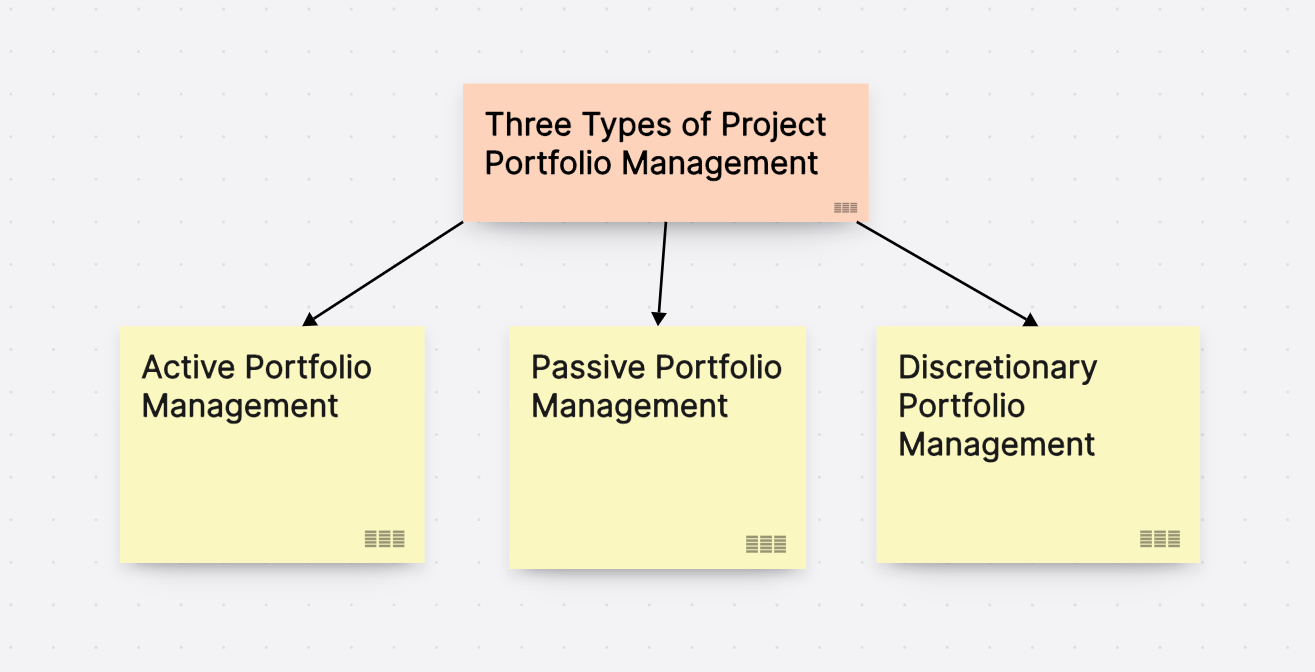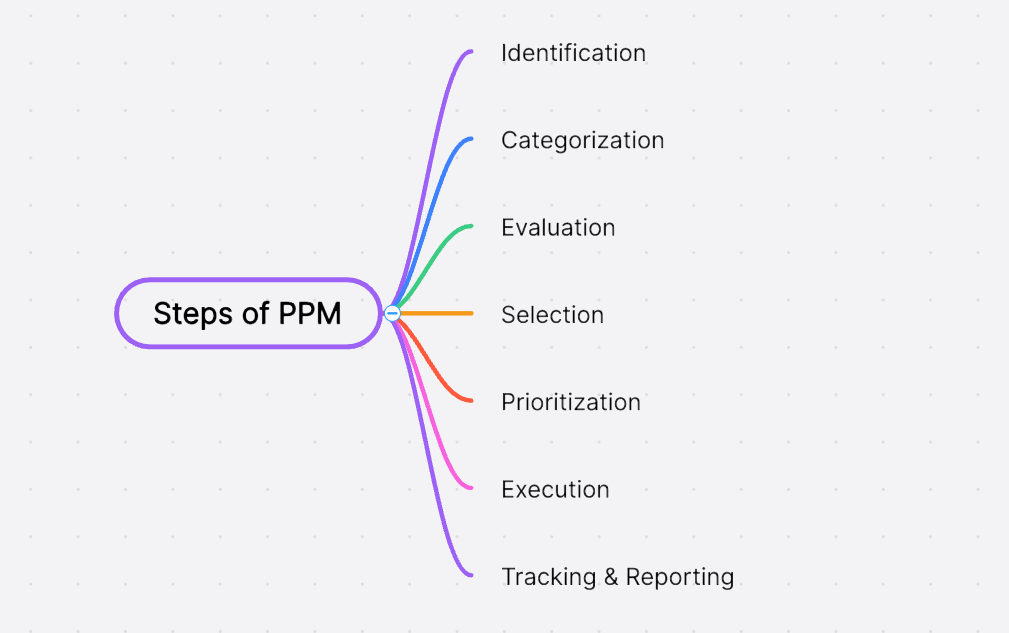Part 1. What Is Project Portfolio Management (PPM)?
Project Portfolio Management (PPM) is a strategic alignment process that serves as a critical tool for organizations to evaluate their projects' strategic performance and alignment with the organization's objectives. It involves the systematic organization, meticulous management, and thorough analysis of a portfolio of projects to achieve specific business objectives.
PPM goes beyond just overseeing individual projects. It provides a structured environment for standardizing project-related governance processes. This includes everything from defining project scopes and objectives, identifying necessary resources, setting timelines, to establishing communication protocols.
One of the key benefits of PPM is its ability to facilitate optimal resource allocation. By providing an overview of all ongoing and proposed projects within an organization, PPM allows decision-makers to allocate resources where they are most needed or where they can provide the greatest return on investment. This helps in avoiding over-allocation or under-utilization of resources.
Furthermore, PPM plays a pivotal role in tracking and reporting project progress. With real-time data at their fingertips, managers can monitor project milestones, identify potential bottlenecks or delays early on, and take corrective actions promptly to ensure that projects stay on track.
Ultimately, Project Portfolio Management is not just about managing multiple projects; it's about aligning these projects with the broader business strategy and ensuring they contribute positively towards achieving organizational goals.
Part 2. What Are the Types of Portfolio Management?
Portfolio management, a pivotal component of an organization's strategic planning and execution, can be segmented into three distinct types. Each type represents a unique approach to managing investments and resources, reflecting different risk tolerances, investment goals, and levels of investor involvement:
Active Portfolio Management: This involves direct hands-on management, with managers making decisions on what assets to buy or sell based on research and market analysis.
Passive Portfolio Management: Here, managers aim to match the return of the overall market or specific segment by replicating an index.
Discretionary Portfolio Management: In this type, investment decisions are made by portfolio managers on behalf of clients.
Part 3. The Importance of Project Portfolio Management
PPM, or Project Portfolio Management, serves as a linchpin in organizations, driving alignment between individual projects and overarching business strategy. It ensures the optimal use of resources by providing a clear view of all ongoing and proposed projects, thereby enabling decision-makers to allocate resources effectively and efficiently.
In addition to resource optimization, PPM significantly reduces risks associated with projects. By offering a comprehensive view of the project landscape, it allows for early identification of potential risks and issues. This proactive approach not only mitigates risks but also minimizes their impact should they materialize.
Another key benefit of PPM is its ability to improve the project success rate. By ensuring that each project aligns with the business strategy and has adequate resources, PPM increases the likelihood of project success. It also provides tools for tracking and measuring project performance against defined objectives, further contributing to improved outcomes.
Moreover, PPM enhances decision-making capabilities within an organization. With access to real-time data about every project in the portfolio, leaders can make informed decisions quickly. They can identify which projects are performing well and which ones need intervention or even termination.
By providing a holistic view of all projects within an organization's portfolio, PPM facilitates strategic prioritization. Projects are no longer viewed in isolation; instead, their strategic value to the organization is considered. This enables organizations to focus on high-value projects that contribute most significantly towards achieving business objectives.
In summary, PPM plays an indispensable role in modern organizations by aligning projects with business strategy, optimizing resource usage, reducing project-related risks, improving success rates and enhancing decision-making capabilities - all while helping prioritize projects based on their strategic value.
Part 4. Steps of Project Portfolio Management
The process of Project Portfolio Management (PPM) involves a series of well-defined steps, each contributing to the effective management and alignment of projects with the organization's strategic objectives:
Identification: This initial step involves identifying potential projects that align with the organizational strategy. It requires understanding the business goals and determining which projects can contribute to achieving these goals.
Categorization: Once potential projects are identified, they are classified according to predefined criteria such as risk level, expected return, resource requirements, etc. This helps in managing the project portfolio more effectively.
Evaluation: In this step, each project's potential impact on strategic objectives is assessed. Various factors such as cost, time, risk, and expected benefits are considered during this evaluation process.
Selection: Based on the evaluation results, the most valuable and strategically aligned projects are chosen for implementation. The selection process ensures that only those projects that contribute significantly towards achieving business objectives are selected.
Prioritization: After selection comes prioritization where selected projects are ranked based on their strategic importance. This helps in allocating resources effectively and focusing on high-priority projects first.
Execution: The execution phase involves implementing chosen projects using appropriate resources while ensuring that they align with the overall business strategy.
Tracking & Reporting: The final step in PPM is tracking progress and reporting performance against set goals. Regular monitoring helps in identifying any deviations from the plan early on so that corrective actions can be taken promptly.
Each of these steps plays a crucial role in ensuring effective Project Portfolio Management and contributes towards achieving organizational success.
Part 5. Boardmix – Best Solution for Project Portfolio Management
Boardmix is an innovative online whiteboard tool that offers robust features for effective project portfolio management. With its intuitive interface and extensive library of drawing templates, Boardmix allows users to visualize their project portfolios clearly. It simplifies collaboration among team members regardless of geographical location. While currently not integrated with other ecosystems, it still stands out due to its user-friendly design, ease-of-use, and versatility in handling various project types. From brainstorming sessions, to planning meetings, to workflow visualization - Boardmix has got you covered!
Conclusion
Mastering Project Portfolio Management (PPM) is not just a desirable skill but an essential one for any organization that aims to excel in efficient resource utilization, strategic alignment, and improved decision-making. It's the key to unlocking your organization's full potential and driving it towards success. In this journey towards mastering PPM, Boardmix serves as your perfect partner. With its robust features designed specifically for effective project management, Boardmix empowers you to take control of your projects like never before. Try Boardmix today for a seamless PPM experience!













